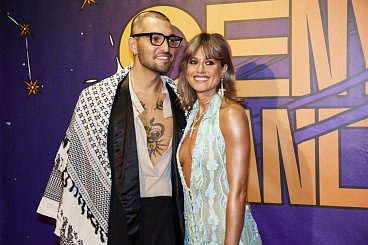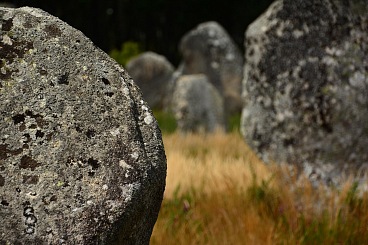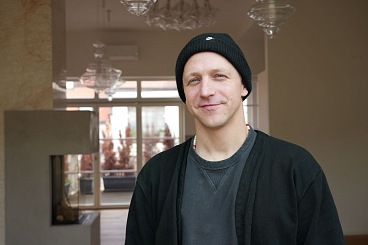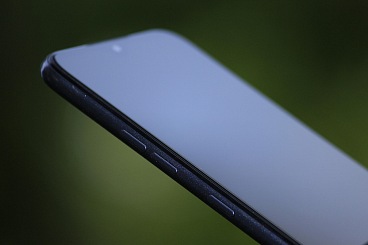Fast Confession - René Kujan: Do all that fear and pain allow you to do, you can always give up later
A marathon and ultramarathon runner, record holder and most importantly a running miracle. When, after a serious car accident, the doctors told him that he would never run again, René decided to believe, not to lose heart. And he started training again. Despite the fact that the accident had left him with a broken sternum, ribs and vertebrae, he completed a marathon a few months later, and in a few years, he set out to conquer Iceland. To this day, he regularly runs "for those" who can't run, and helps raise money for various charities. For me personally, René is proof that with determination, faith and a strong will, you can move even the highest mountain in your life.
René, what has running brought to your life so far?
I think I could talk about that for a long time… Running definitely brought a lot to my life. Whenever I don't feel well and go for a run, my bad mood subsides after a few kilometers. Maybe I should rather talk about what my running has brought to others.
Since 2012, when I ran around Iceland as part of the 1 man, 30 days, 30 marathons event, I have been running regularly for the Wheelchair Sports Club in Prague. I‘ve also collaborated with Icelandic rehabilitation institutes, the Czech Association of Paraplegics, Firefly or Light for the World. Recently, I‘ve had the opportunity to calculate how much money for charity I‘ve managed to raise during that time, and I got to the amount of over a million and a half. I think that‘s what makes me feel most accomplished.
What is the strongest experience you have had thanks to running?
I was most touched by one such experience from Iceland. The director of the rehabilitation centers invited me for a tour of one of the clinics and personally showed me everything. After visiting special gyms, we got to the so-called start-up flats, where people are learning to live in a wheelchair after an accident.
I noticed a newspaper clipping stuck on one wall. It was an article about my run around the island. Money is definitely a good thing, and I hope it helped the clinic a bit, but when you can provide mental support and motivation to others by doing something you like, it means so much more. I like to think that the run wasn‘t totally pointless, if it helped someone find the strength to battle an unfavorable fate rather than giving up.
So one can say that running is a form of therapy for you?
Definitely. And not just for me. It's not that long since I ran 70 kilometers for the Addictology Clinic, where they treat alcohol addiction and use running as part of addiction therapy.
Is it harder to train your mind or body while running?
It depends a lot on the situation. If you don't feel like running, it's definitely much harder to convince your head. Because the moment you tame the mind, your body and legs follow. Once you are in a good mood and have a positive attitude towards running, your body is usually not a problem.
While running, when do you feel a crisis coming on?
It is said that the biggest crisis during a marathon occurs after about thirty kilometers. I think it depends on many individual factors. The psyche plays a big role, and it also matters if you got enough sleep, if you‘re eating healthy or how much you‘ve been training.
Personally, when I‘m 32 kilometers in, I always tell myself that I can do the ten that remain to the finish line, even if I had to crawl the rest of the way. (laughs) I've reached the stage where I think, "You've done hundreds of marathons, you‘ll make it this time, too."
Have you been running since you were little?
In elementary school, I didn't really enjoy running. It didn't come until high school. I‘ve been running marathons since I was 24. Gradually, I‘d worked my way up to three to four marathons a year over time, but it wasn't like it was the purpose of my life. I had a great turning point after my car accident, I was thirty-three at that time.
Can you describe more specifically what happened to you then?
I was sitting in the passenger seat. And the friend who was driving hit an oncoming vehicle. An airbag inflated in front of his seat, so he got out of it with a broken wrist. I did have my seat belts fastened, but there was no airbag there, so I suffered a compression fracture of the vertebra in the impact. During the flight to the hospital, they had to resuscitate me three times in a helicopter and connect me to artificial lung ventilation. I also had multiple rib and sternum fractures, and bruises of the lungs and heart. I only regained consciousness after the operation, with titanium screws in my back.
How long did your recovery take?
It took half a year for me to get better. I had to learn to walk in a way that wouldn‘t damage my spine. I couldn't sit for several months, only lie down or stand. I remember the first time I tried to get up from the hospital bed, I felt like I would completely fall apart.
What was going on in your head when you were leaving the hospital?
I wondered if I would ever be able to run again. I asked various doctors about it, some of whom told me I should be happy I can walk. The prospect of running a marathon was out of the question.
Then I approached a young doctor at Prague's spondylosurgery department with my favorite question if I would ever be able to run a marathon again. And he replied, "Do whatever fear and pain allows you to do, you can always give up later." These words were very motivating for me and gave me a lot of strength. Exactly five years after the accident, I set out on my run around Iceland.
You wrote a book called Run While You Can. I saw it got a lot of positive reviews. Did you get any reaction from the readers that pleased you?
Yes, I get those sometimes, for example on social networks. What pleased me the most was that one company ordered several dozens of books as a Christmas present for their business partners.
How long did the preparations for your run around Iceland take?
About a year. First I got in touch with the wheelchair club, for which I‘ve actually put in those kilometers in Iceland and raised money. It was necessary to find sponsors and so on, the preparations were really long. To be honest, I wasn't sure if I‘d make it, but that‘s where the challenge lay. I wanted to find out what my body and mind could handle, it was a great adventure. About a month in advance, I began to get ready for Iceland in the Czech Republic, by running at least half a marathon every day.
How many kilometers have you actually put in within your Iceland run?
I ran an average of 44 kilometers a day, which was almost thirty-two marathons in those thirty days. Every day I had to put in a little more than a marathon to make it work. I had an accompanying vehicle with me, with my girlfriend behind the wheel. She‘d given birth two months before then. Every day, she left before me and we had an agreement that she would always hand me a sandwich or a drink through the window after ten kilometers or so, and I‘d keep running.
So the baby went with you?
Exactly! (Laughs) Just last year, I took my son, who is already seven years old, to Iceland and showed him the places he‘d "seen" with me when he was two months old. (laughs)
Did you have days when you wanted to throw in the towel?
The seventh day was the worst for me. I remember it very well. I was soaked to the bone, the wind was blowing at speeds of over 50 kilometers per hour, in gusts of over 80. It's a feeling similar to trying to run in a pool with water reaching up to your neck. As soon as I was done for the day - after eight hours, which was my longest time - I collapsed in the bed and slept for about ten hours.
When I woke up next morning, the thought whether I would force myself into running that day passed through my head. But after a few kilometers, my stiff legs warmed up again, and I knew he had another day and another marathon ahead of me. After those days, paradoxically, I got into a state where I felt pain only when I wasn‘t running.
How much money did you raise for the handicapped thanks to Iceland?
When I went for a run around Iceland for the first time, I managed to raise one hundred and fifty thousand for Czech wheelchair users and some more money for Icelandic rehabilitation centers in thirty days. For the third year, we got about eighty thousand for my run from the easternmost to the westernmost point of Iceland. But there were also events, where I managed to raise over 600 thousand for two consecutive years through running.
Do you still sometimes feel back pain while running?
Yes, sometimes I do feel my back, especially when I'm running a longer route and have a heavier backpack on my back. Experience has taught me that it‘s reasonable to run with a backpack weighing maximum of 7 kilos. But when I compare the pain and my current state to how it could have turned out, I am very grateful.
Do you think that half marathons or marathons are for everyone?
Yeah, technically yes. I firmly believe that every person with average health can do this.
How long should I train for a marathon?
If you don't want to mess up your body, it‘s good to train at least a year. Personally, I‘d vote for double the time.
What do you think about the opinion that running is harmful to your joints and knees?
Well, I‘ve been trying to damage my joints and knees for over twenty years, be in the mountains or in off-road contitions, and I have zero problems. I don‘t go for massages and I don‘t take any special joint nutrition. It's all about adequate preparation. If we give the body enough time to adapt, it can handle impossible things.
How many kilometers do you run in a day?
When I start running, I try to put in at least ten kilometers. It varies from month to month, but I usually run several hundred kilometers. But not all kilometers are the same. It depends a lot on intensity, speed and conditions.
What‘s the most important thing in running?
Someone might say shoes. (laughs) But I don't think so. When it comes down to it, you can run marathons or even ultramarathons barefoot. The crucial thing, and I can‘t stress this enough, is long-term, conscientious preparation. Running technique is what I consider important. It‘s said that everyone can run, but if you want to run something longer and more intense, then good technique is a must.
How about your plans? Will there be another island?
Probably not, but this month I would like to undertake a hundred-mile project (160 kilometers, ed. note) from Kralupy nad Vltavou to Sněžka. I would like to dedicate this run to the Wheelchair Sports Club Prague again.















